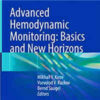Addressing Shortcomings in Infection and Sepsis Treatment Should Be Top of the Priority List
contagionlive.comHospitals are increasingly facing the challenge of cutting costs while also improving clinical outcomes. This is certainly true in the infectious disease sector, as unrecognized or ineffectively treated bacterial infections can lead to sepsis, which can be life-threatening. Sepsis is relatively common: each year in the United States, more than 1.6 million adults develop sepsis and approximately 270,000 people die from it. In fact, sepsis claims more lives annually than breast cancer, prostate cancer, and AIDS, combined. As a result, it is important for clinicians and health care executives to reflect upon why sepsis recognition and treatment are crucial for both facilities and patients, and how they can be achieved. As an infectious disease pharmacist for more than a decade, I have first-hand experience with managing infections and sepsis in hospitals and am familiar with the effects the current process has on patients and health systems alike. Consider the typical diagnosis and treatment protocol for bacteremia.

















